Banja Luka is the second-largest city in Bosnia and Herzegovina and the administrative capital of Republika Srpska, an autonomous region within the Republic of Bosnia and Herzegovina that is predominantly Serb in ethnicity.
Even though Banja Luka is the second city, like most settlements away from Sarajevo, it is fairly small (population in the region of 300,000 including the outer limits of the city), easy to navigate and sees only a few non-domestic/regional tourists in comparison to the capital.
Although the city is old and dates back to Roman times, much of the architecture these days has been reconstructed because of a series of recent misfortunes. To begin with, from 1941 to 1945, Banja Luka was part of the Independent State of Croatia, the puppet republic that was loyal to Germany during World War II and part of the Axis powers (*). The state was led by the ultra-nationalist (and ultra-Catholic) fascist movement known as Ustaša (or Ustasha) and members of the organisation’s militia went out of their way to ensure that many of the city’s non-Catholic religious structures were completely destroyed.
(*) Yugoslav Partisans eventually liberated Banja Luka in April 1945 and it became part of the Socialist Federal Republic of Yugoslavia.
The second event in recent times to affect Banja Luka was two successive earthquakes on 26th and 27th October 1969, which measured 6.0 and 6.4 respectively on the Richter scale and caused considerable damage to a lot of the city’s infrastructure and buildings.
And then, finally, some twenty years later, Banja Luka’s infrastructure took yet another beating due to its frontline prominence and status as the de facto capital of the newly formed Republika Srpska during the Bosnian War (April 1992 – December 1995). As an example, all the city’s mosques (sixteen in total) were attacked and razed to the ground during this time.
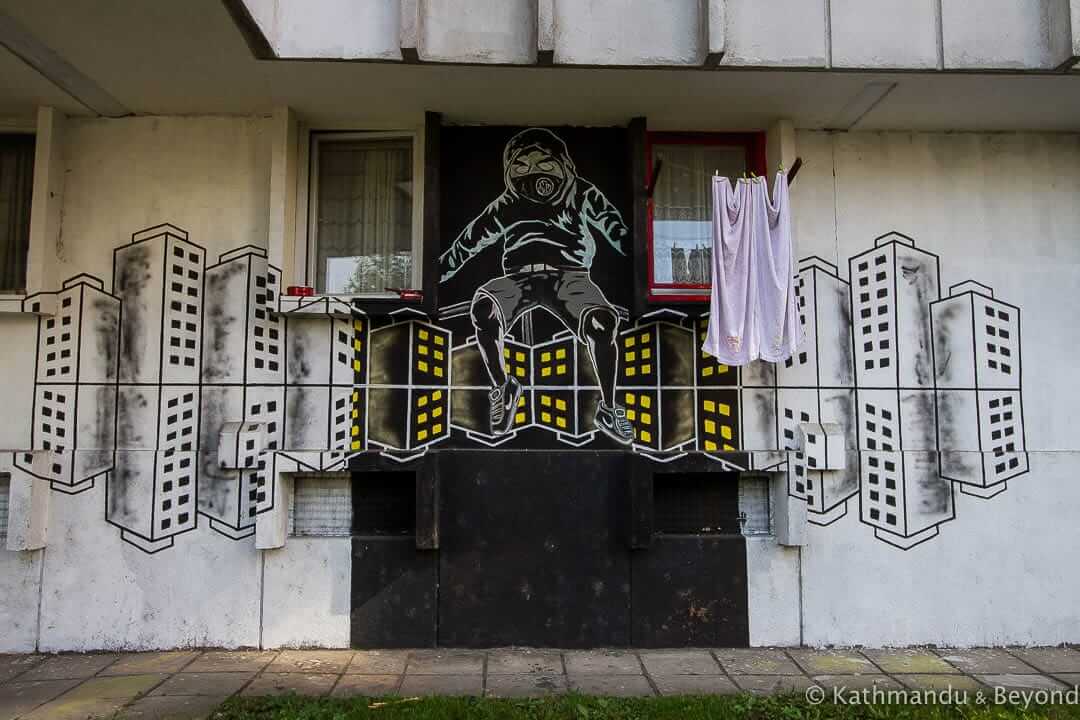
Borik, Banja Luka
All things considered, it’s not surprising that Banja Luka is not an instantly visually-appealing city but there are things to see, including architecture and, what’s more, it is one of those cities that grows on you, the longer you linger. Although there probably isn’t enough in the way of conventional sights to keep you in Banja Luka for more than half a day, the city does have an especially vibrant cafe culture and so it’s easy to kill any spare time you might end up having.
What’s more, if you are heading between Sarajevo and Zagreb in Croatia (or vice versa) and are looking for somewhere to break the journey then Banja Luka is an ideal place in which to do it.
Things to see and do in Banja Luka
The places of interest listed below are in an order that makes for a sensible walking tour.
Boska Shopping Centre
Boska Shopping Centre isn’t an attraction in its own right (unless, of course, you are into Yugoslavia-era shopping centres in the same way we are!) but, it’s the logical place from which to start exploring the city.
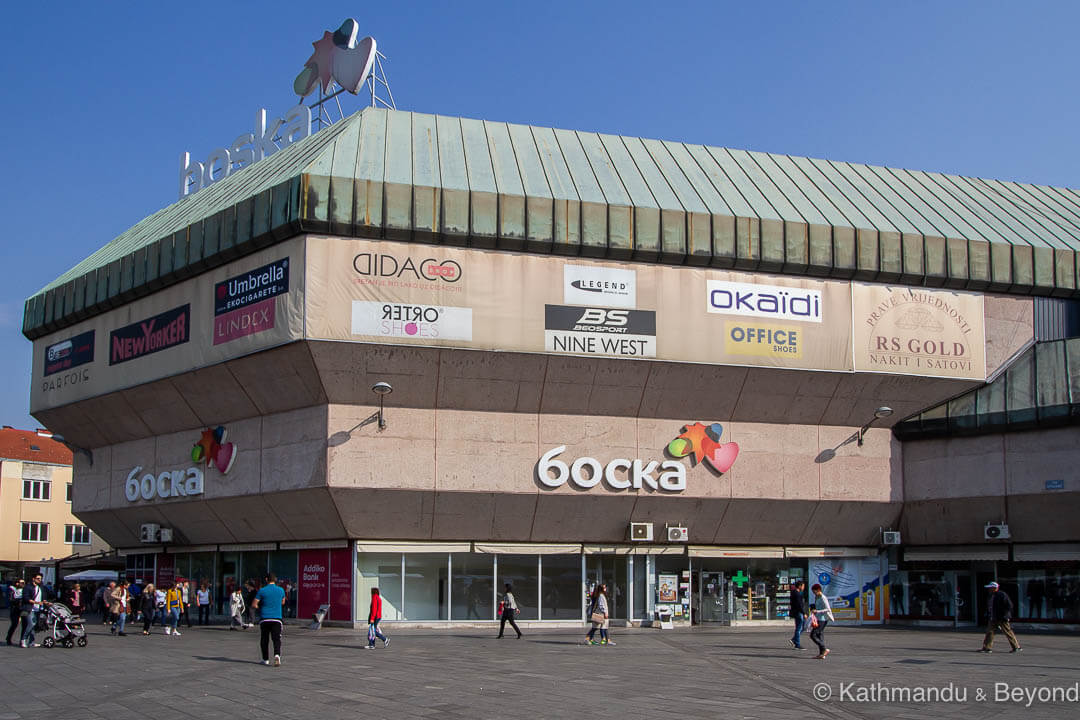
Boska Shopping Centre, Banja Luka
Museum of the Republika Srpska
We aren’t that bothered about regional museums but, if you want to visit this one, it is located just behind Boska Shopping Centre (next to the Children’s Theatre).
Kastel Fortress
A short distance east of the city centre, the ramparts are impressive at this large, medieval stone fortress. It’s a pleasant place for a walk but there is very little left inside to see.
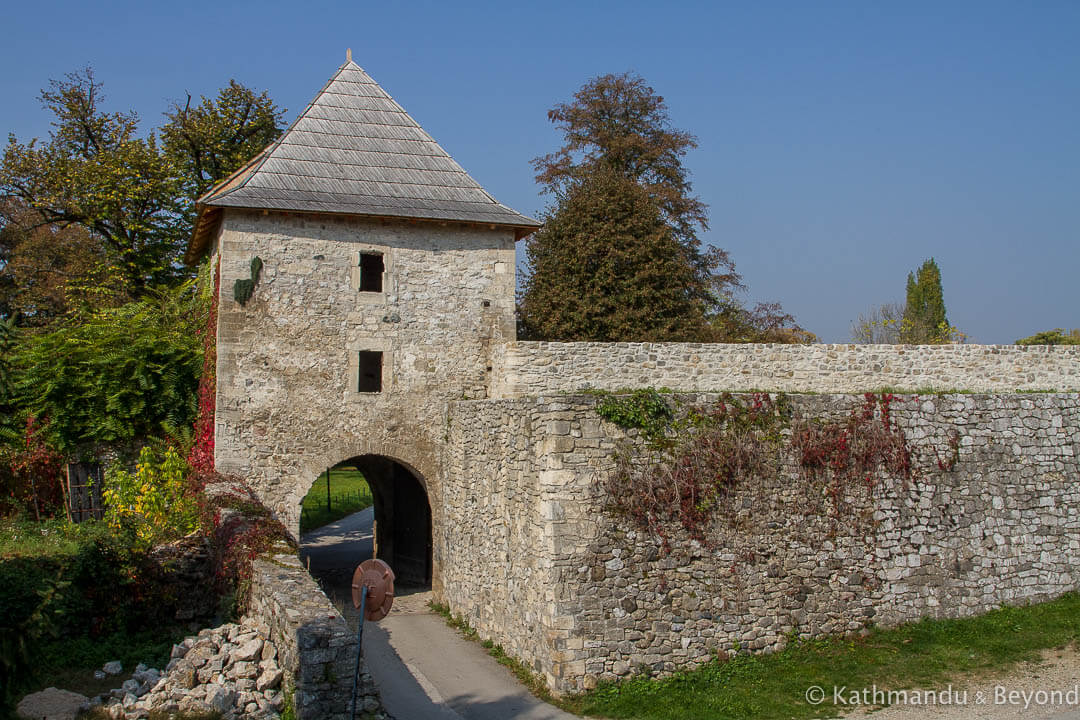
Kastel Fortress, Banja Luka
Ferhat Pasha Mosque
To some, the Ferhat Pasha Mosque is one of the city’s most important cultural heritage sites. It dates back to the 16th century and was considered, at the time, to be one of the finest examples of Ottoman-style Islamic architecture in Europe. But, along with all the other mosques in the city, it was destroyed in 1993 during the Bosnian War. It took almost sixteen years to reconstruct the mosque and it eventually re-opened in May 2016.
Gospodska Street
Gospodska Street, also called the Street of Veselin Masleša, is a pedestrianised thoroughfare that links Boska Shopping Centre with the Palace of the Republic of Srpska. The street is very popular in the evenings and particularly at weekends when it seems like the entire population of Banja Luka is out and about and taking the air. If you duck down some of the small alleyways that lead off Gospodska Street, you’ll find a plethora of cafes and restaurants that are great places to while away a couple of hours or so.
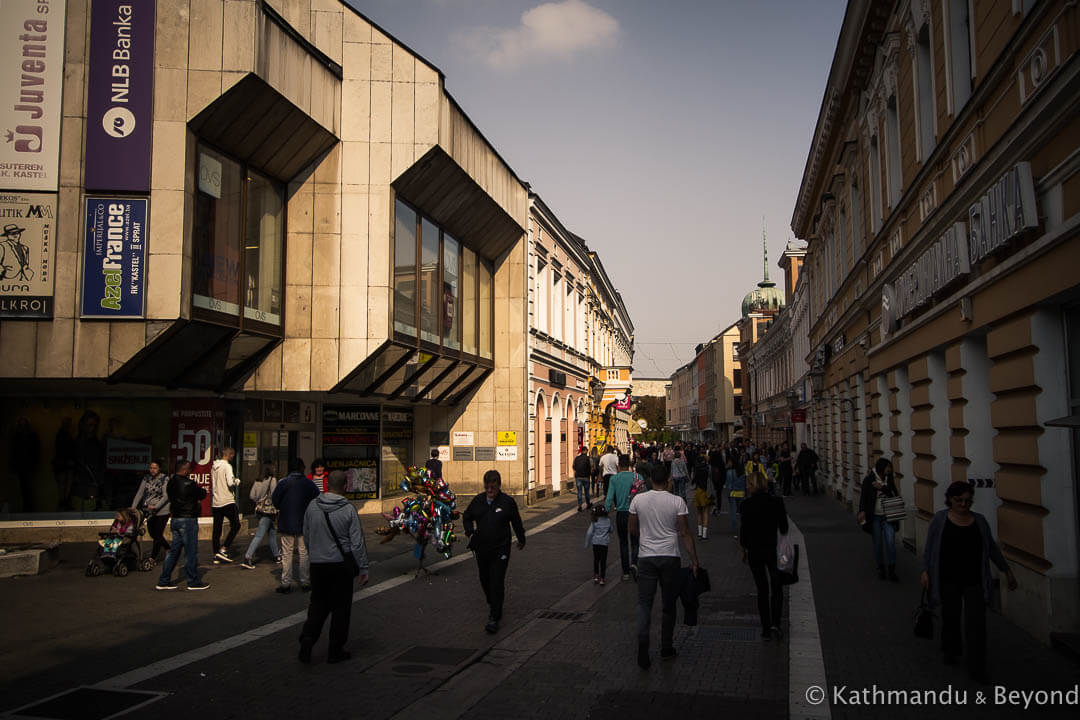
Gospodska Street, Banja Luka
Cathedral of Christ the Saviour
It’s hard to miss this large Serbian-Byzantine style Orthodox church in the centre of the city. The origins of the cathedral date back to the mid-1920s but it was badly damaged by German bombing in 1941 and then, shortly after, demolished completely on order of the occupying Croatian Ustaša. The rebuilding of the church began in 1993 and was completed in 2004 (*).
(*) Those of you paying attention will realise this was the same year that the Ferhat Pasha Mosque was deliberately destroyed.
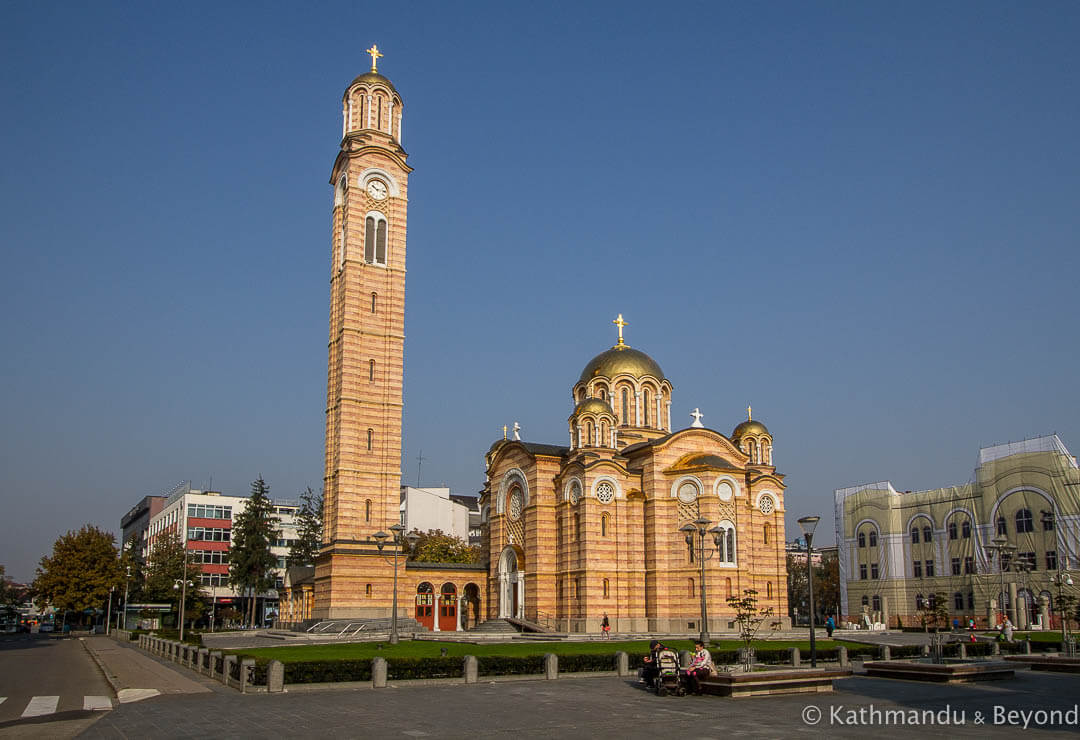
Cathedral of Christ the Saviour, Banja Luka
Statue of Svetislav Milosavljević
Opposite the cathedral is a statue of Svetislav Milosavljević, the first governor of Vrbas Banovina, a then-province of the Kingdom of Yugoslavia (1929-1941) of which Banja Luka was the capital. He was also an architect and, although not directly responsible for their construction, he was the driving force behind the creation of some of the city’s more notable buildings, including, what is now the Palace of the Republic of Srpska and the National Theatre (see below).
Palace of the Republic of Srpska
Built in the 1930s, this excellent example of modernist architecture has been used predominately as a premise for a bank and only became the office of the president of the Republic of Srpska in 2008.
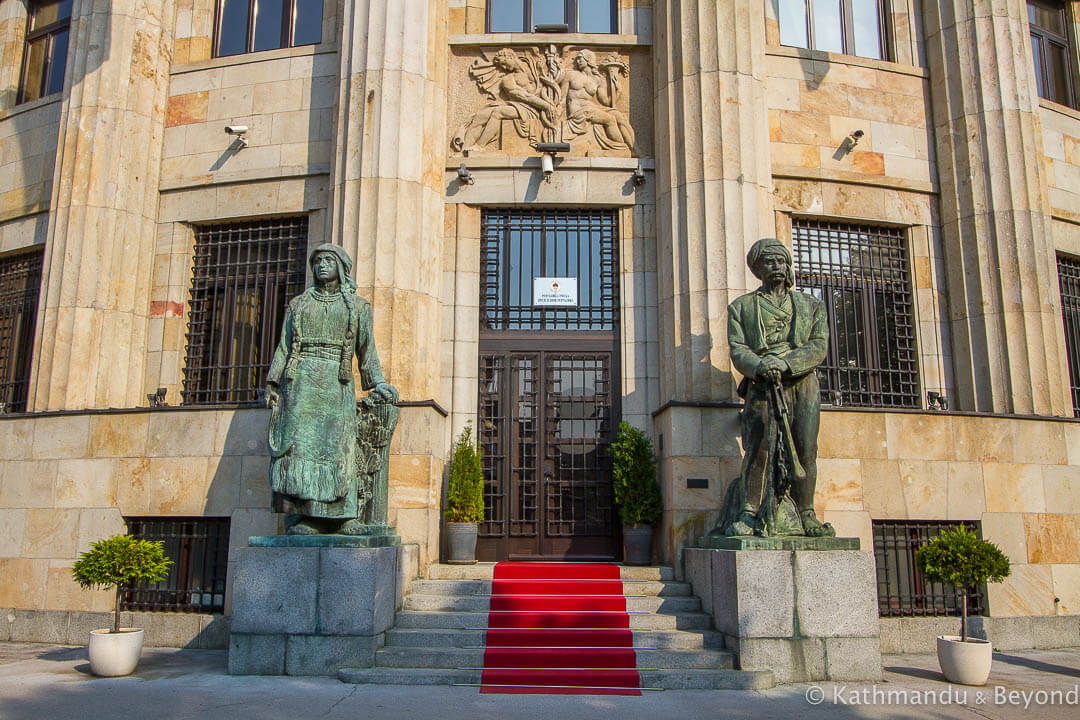
Palace of the Republic of Srpska, Banja Luka
Monument to Fallen Soldiers in World War II
You will find the city’s Second World War memorial opposite the Grand Casino and Hotel Bosna.
National Theatre of the Republic of Srpska
The pedestrianised road leading away from the Palace of the Republic of Srpska in a northeasterly direction is a very pleasant tree-lined avenue full of restaurants and bars. At the end of the road is the National Theatre of the Republic of Srpska, another of the city’s more notable buildings.
National Assembly of the Republic of Srpska and the Memorial to the victims of Jasenovac
Over the road from the theatre is the National Assembly of the Republic of Srpska. There’s nothing remarkable about the building itself but, in front of it, there is a memorial dedicated to the hundreds of thousands of victims who perished at Jasenovac concentration camp during World War II. Jasenovac is 80km north of Banja Luka and is now situated in modern-day Croatia (it’s literally on the Croatia/Bosnia border) but the reason why there is a memorial in Banja Luka is that many of its Jewish and Serbian inhabitants were deported to the camp at Jasenovac.
There is a bigger memorial complex at Jasenovac itself, which is dominated by a large sculpture of a stone flower. It’s an incredible and worthy place to visit if you ever get the chance.
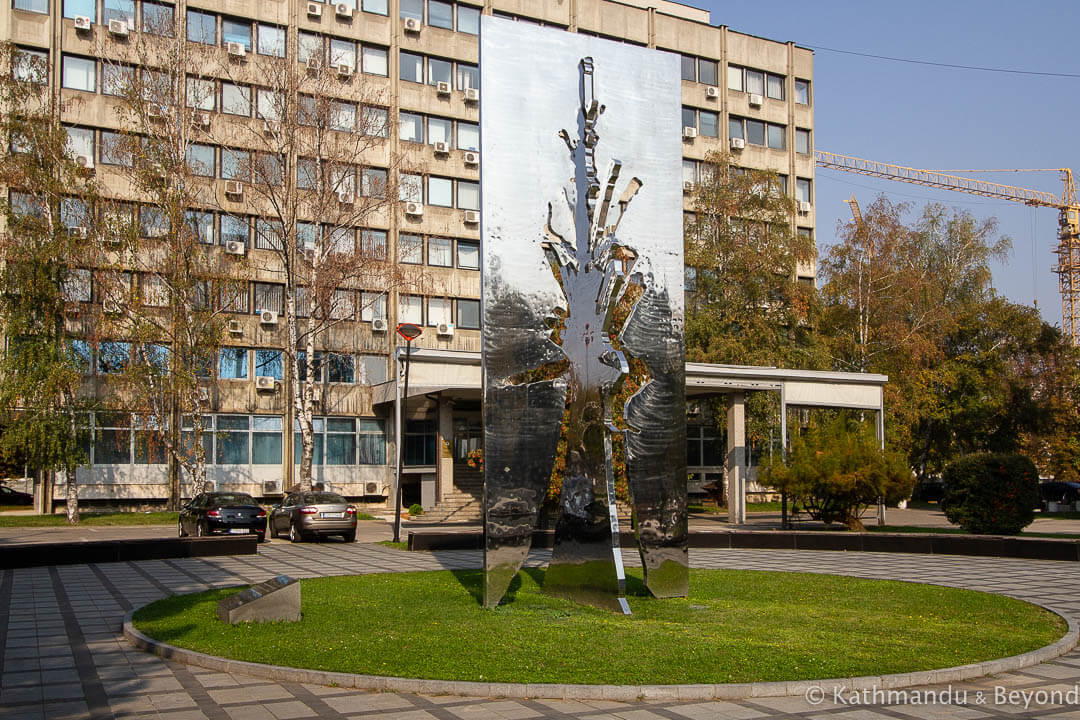
Memorial to the victims of Jasenovac, Banja Luka
Cathedral of Saint Bonaventure
Directly opposite the National Assembly of the Republic of Srpska is the modernist Cathedral of Saint Bonaventure, a Roman Catholic church that was constructed in the 1970s after the original Gothic-style building was destroyed during the 1969 earthquakes. The distinctive-looking, and thoroughly brutalist, bell tower was added in 1991 and, not long after, suffered damage, still visible today, inflicted during the Bosnian War.
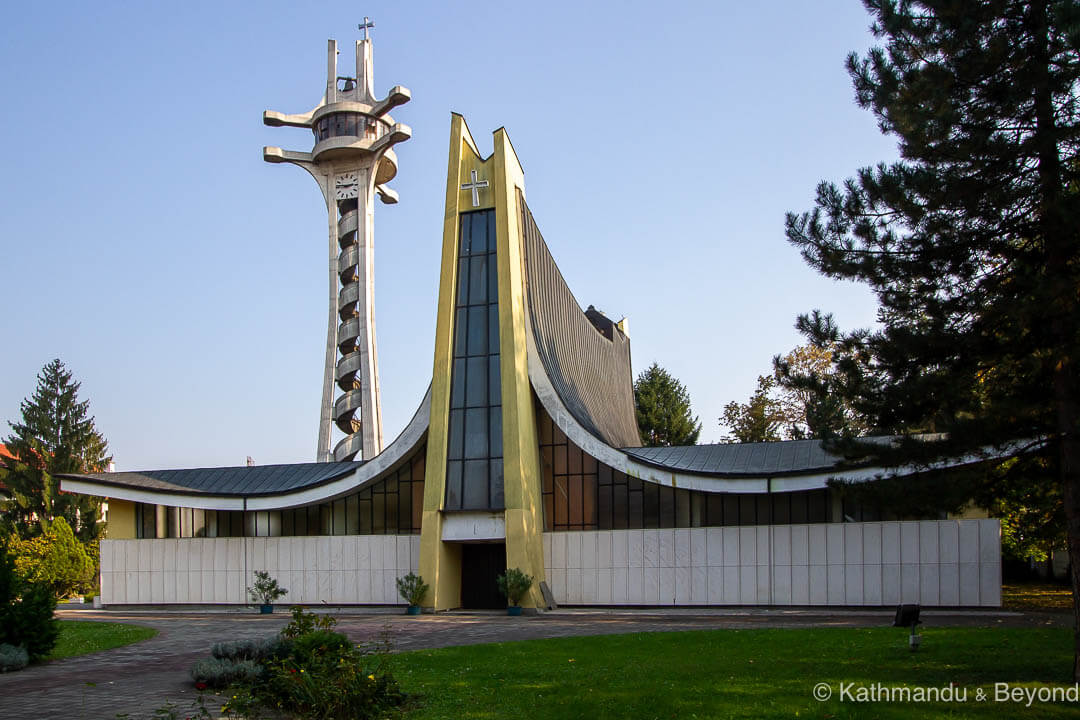
Cathedral of Saint Bonaventure, Banja Luka
Borik
If we are being honest, besides the fact that we wanted to break the journey between Sarajevo and Zagreb, the main reason we visited Banja Luka was so that we could see the large urban development known as Borik.
A short walk northeast of the town centre, the neighbourhood of Borik was constructed not long after the earthquakes in 1969 as a place to re-house those who had lost their homes as a result of the tremors. It is typical of socialist housing estates of the time and is a fascinating place to visit if you want to see a different aspect of the city and/or enjoy looking at street art, of which Borik has more than its fair share.
Kirsty has written a more detailed post about street art in Borik.
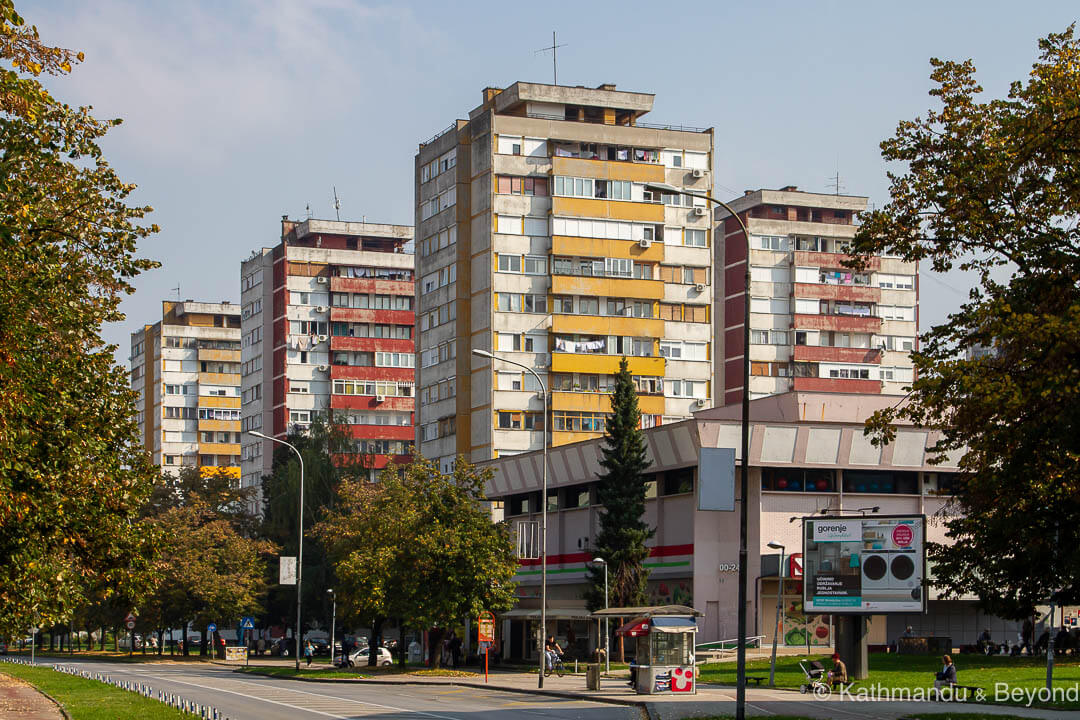
Borik, Banja Luka
Monument to the fallen Krajišnici
We missed this monument due to a bit of bad planning on our part. The Monument to the fallen Krajišnici is the city’s spomenik (Tito-era World War II memorial) and is located at the top of the Banj Hill, which is about 5km southwest of the city. We thought we could drive directly to it when we tried to visit in October 2018 but the closest parking to the monument is about a 3km walk away and we left it too late in the day to add a 6km round-trip walk into our schedule and so had to give it a miss.
Additionally, there is no public transport that we are aware of that will get you close to the monument, so a taxi, which will drop you off at the parking area so, is probably the only option.
Adventure sports near Banja Luka
There are opportunities for rafting, mountain biking and other adventure sports in the countryside that surrounds Banja Luka. We haven’t experienced any of these activities firsthand but, having driven extensively in the area, it’s easy to envisage that the dense forests and mountain terrain that encompass the city would be a great place for such pursuits.
Contacting Banja Luka Tourist Board would be a good place to begin making enquiries.
Getting to Banja Luka
There are direct buses between Banja Luka and Sarajevo and also between Banja Luka and Zagreb. Both of the buses that we took were full and so we would recommend booking tickets a day or so in advance if you need to stick to a schedule.
As well as buses, there are private minivans at Banja Luka bus station that also go to Zagreb.
Additionally, there are buses connecting Banja Luka with both Jajce and Travnik, two other small, but pleasant towns that are worth stopping in if you are travelling up from, or down to Sarajevo.
There used to be trains running between Sarajevo and Zagreb via Banja Luka but we checked at both Sarajevo’s and Banja Luka’s railway stations and there were none operating. This was in October 2018. The situation may have changed since then so it’s best to check locally.
Getting around Banja Luka
It’s possible to see all of downtown Banja Luka’s sights on foot and the only time you will need to use public transport is for getting between either the main bus or train station, which are adjacent to each other, and the city centre 3km away.
Bus numbers 6, 8, and 10 leave and arrive from the bus stop near Boska Shopping Centre (allow ten minutes for the journey).
Where to stay in Banja Luka
We stayed in an apartment not far from Boska Shopping Centre. The bedroom and living space were both a good size but the kitchen and bathroom were both tiny. All in all, though, it was a good base for a couple of days and the price was very reasonable at €20 per night. There is a well-stocked supermarket in the basement of the Boska Shopping Centre.
READ MORE BLOG POSTS FEATURING THE BALKANS
HAVE YOU VISITED BANJA LUKA? OR ARE YOU PLANNING A TRIP TO BOSNIA? PIN THIS POST…
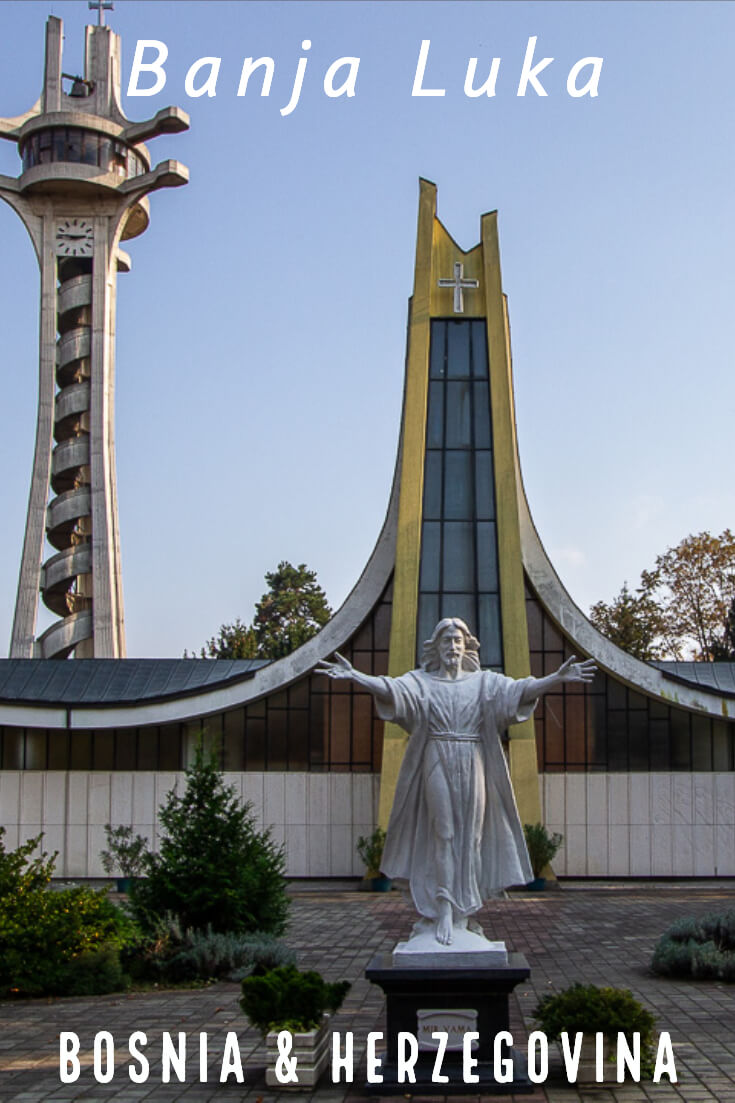
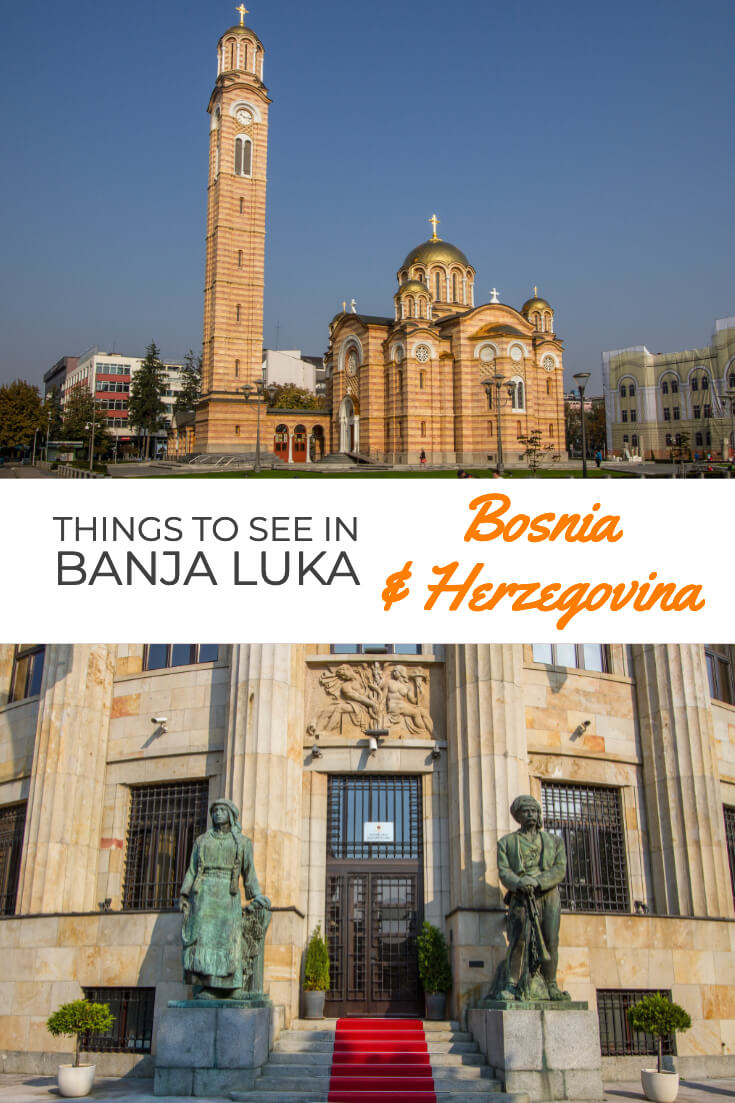
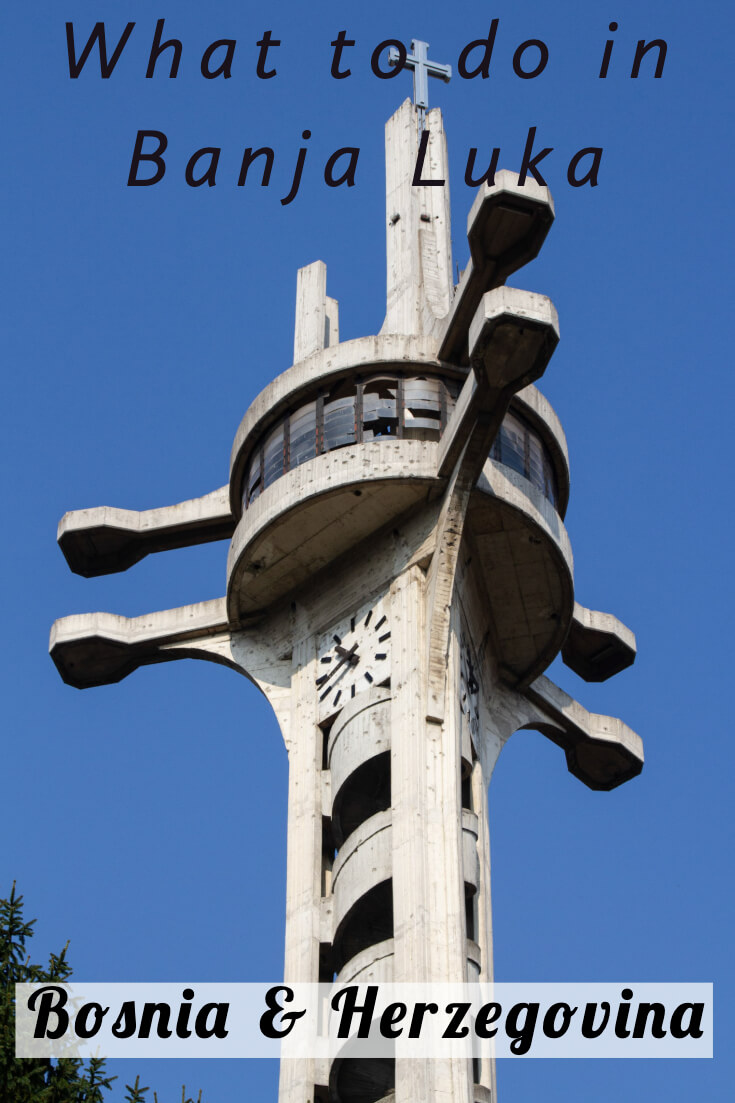

Nice suggestion when in Bosnia!
This is a great article, You mentioned pretty much everything to do or visit in Bosnia. Thanks, mate for this great info, really appreciated. You have a great collection of pictures also.